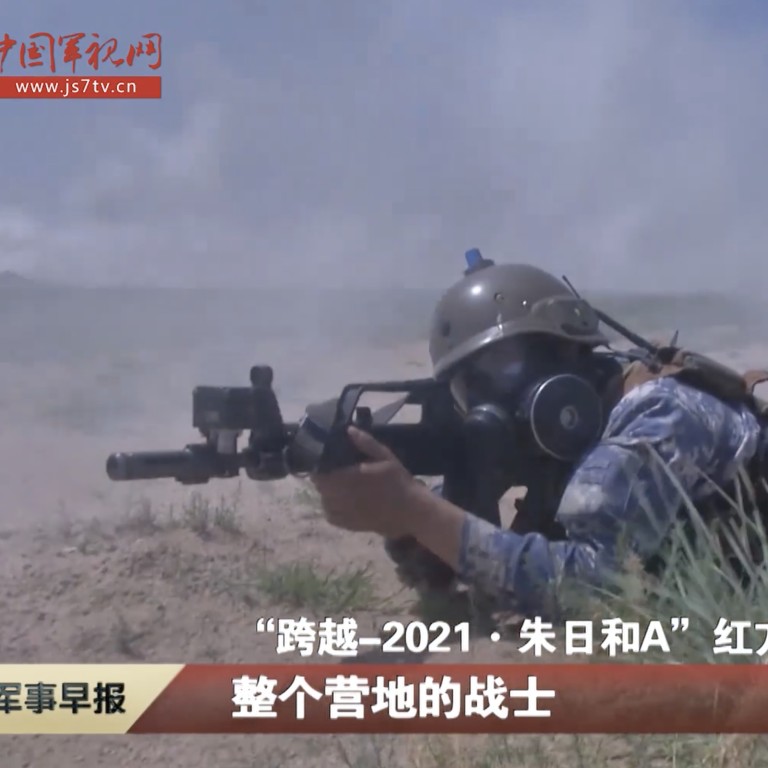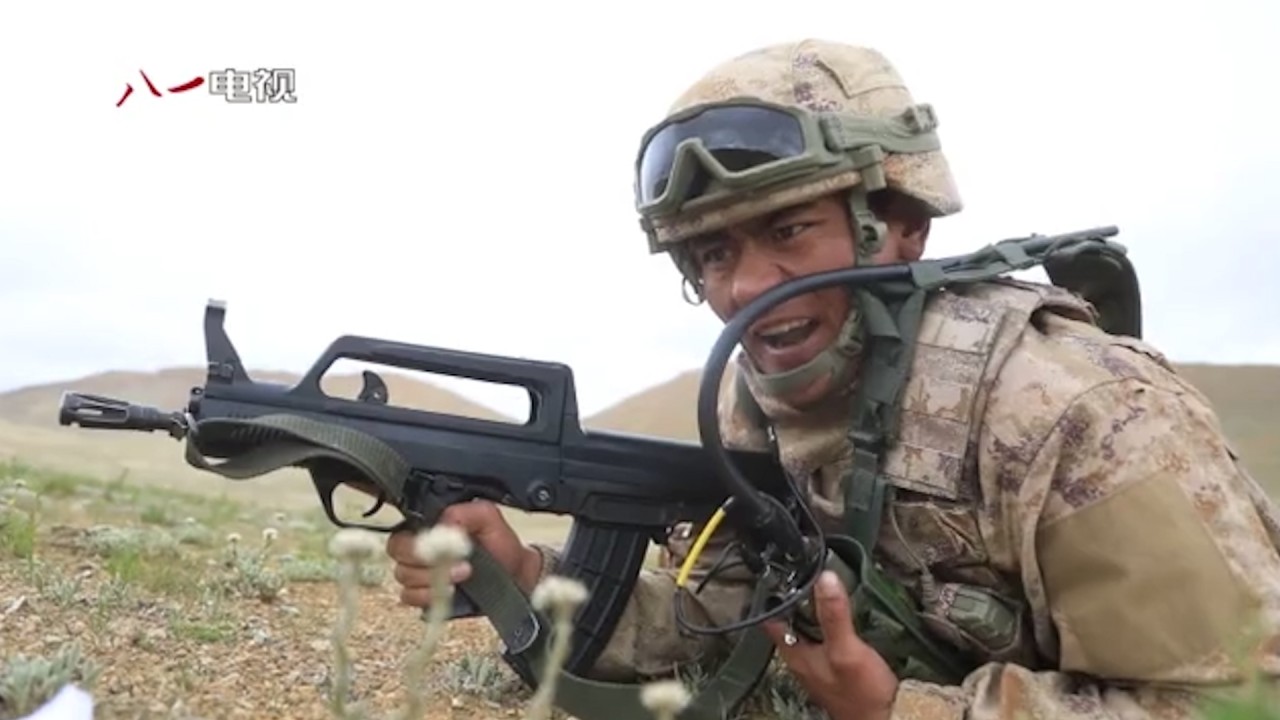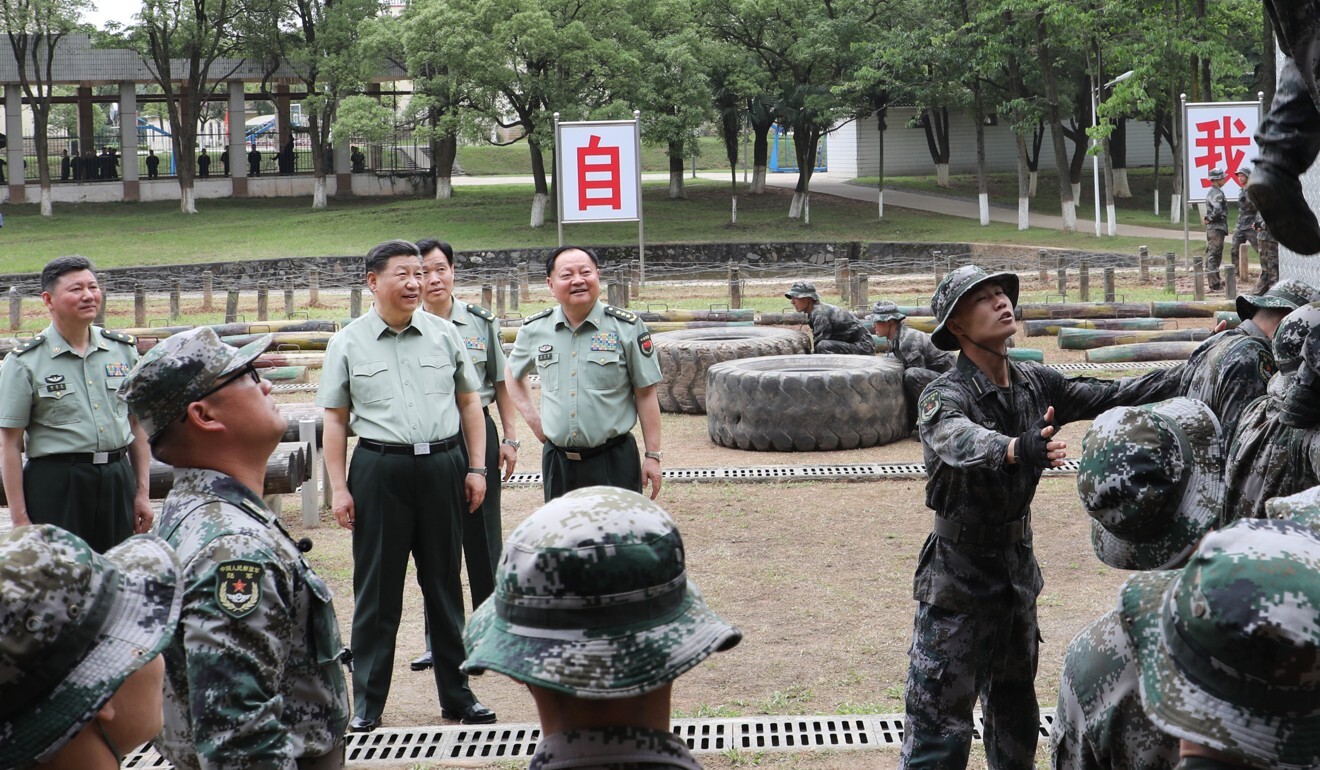
China’s PLA commanders come out in force as troops chase perfect response to US and Nato
- Nearly 200 senior military commanders gathered for annual exercise at Zhurihe training base to inspect combat readiness and standardise drill evaluations
- Training included intensive session to rectify deficiencies exposed in recent confrontational drills with the ‘blue army’, which simulates US and Nato commands

01:27
PLA forces conduct drill in Tibet: experts call it a warning to China’s neighbour India
This week’s exercise added an intensive session to rectify deficiencies exposed in confrontational drills more than a month ago with the “blue army” – which simulates an “opposing force” adopting a command system and tactics similar to those used by the US and Nato – with senior PLA commanders inspecting the outcome.
The PLA’s “blue army”, set up in 2012, conducts regular confrontational drills with the “red army” – drawn from around the country – to simulate battle conditions.
Chinese soldiers given tips on how to prevent altitude sickness
“The core purpose of organising such a large-scale training camp is to focus on actual combat training, to standardise the systematic training methods of the new era,” Tang Fei, director of the Training Bureau of Army Staff, told state broadcaster CCTV.
Tang said changes had to be made to previous training modules, so as to strengthen problem-solving capabilities. “[This time] the troops completed the rectification at the base after finding the problems, and then carried out inspection and assessment … improving further through further combat,” he said.

Xi has also called for better strategic planning and cutting-edge design to transform military training and accommodate the needs of real combat. The PLA has held more than 100 cross-regional exercises since 2016, according to state media reports.
New weaponry in action as Chinese troops, jets, artillery hold drill in Tibet
The participation of senior commanders from across the country was also aimed at improving on-site capabilities in situations of war.
“This exercise, bringing commanders of all levels to Zhurihe, [was] a very important move for the army to improve on-site command capabilities,” Yang Jun, one of the commanders taking part told CCTV.

01:55
China and Russia begin joint military drills in Ningxia Hui autonomous region
Song Zhongping, a former PLA instructor, said while the new training method could “improve overall combat capabilities”, it was also a good way to further professionalise the “blue” unit, which in turn would help improve the combat capabilities of the red army.
Zhou Chenming, a researcher from the Yuan Wang military science and technology institute in Beijing, explained: “In the past, the exercise would aim at the result – win or lose, but now a new sector has been added to correct deficiencies and to foster improvement under the inspection and guidance of senior commanders.”

